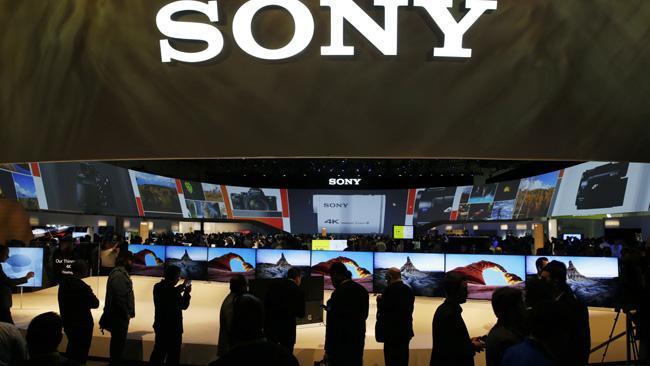Sony stakes future on high-resolution audio TVs and devices
SONY is staking its future on high-resolution audio TVs and other products to be released in Australia.

SONY is staking its future on high-resolution audio, incorporating it into its TVs and other products to be released in Australia.
Last year Sony introduced a range of high-resolution audio devices. They included speakers, Walkmans and headphones.
Now the range is expanding. Sony Australia deputy managing director Vincent Yip said the Japanese manufacturer would add high-resolution audio sound bars, sound bases and TVs to its Australian product line-up this year.
With a higher resolution and frequency range than MP3 or even CD, high-resolution audio purports to more accurately reproduce music as created by artists. While some enthusiasts embrace it, others say it is virtually impossible for the human ear to decipher these higher-end frequencies.
That hasn’t stopped companies from gearing up to sell HRA devices, and with modern hard drives capable of storing large HRA files with ease, there’s a concerted effort by record labels and manufacturers such as Sony to promote them.
Audio resolution isn’t the only feature of HRA. Last year, labels and manufacturers agreed on a standard that defines the quality of the audio source of an HRA file. A high-resolution track derived from an analogue master source is classified MQ-A, one from a CD master source is MQ-C and so on.
At the Consumer Electronics Show in Las Vegas this month, 70s rock legend Neil Young was spruiking his Pono Player, a Walkman-style HRA device launched on crowd-funding site Kickstarter.com. Young and his business associates had sought $US800,000 ($974,000) for the product on Kickstarter but received a huge $US6.2 million in pledged funding.
But at CES, Young told reporters his Pono company might exit the hardware game, and instead license other manufacturers’ HDA devices as either “certified Pono” or “branded Pono”.
Delivering high-definition audio wirelessly requires more bandwidth.
At CES, Sony promoted a low latency codec called LDAC which Mr Yip said would transmit data three times more efficiently than would standard Bluetooth streaming.
Sony’s HRA NW-ZX2 Walkman, AV receivers, headphones, wireless speakers and sound bars would use the LDAC CODEC, Mr Yip said. He said the advent of 4K TVs had resulted in more Australians opting for TVs with larger screens.
“We’re now defining a large screen size as 60-plus inches with a notable increase in the purchase of these bigger sizes. When the size of a screen is more than 50 inches, the density of the pixels becomes increasingly important, hence 4K Ultra HD is critical to the quality of consumers’ viewing experience,” he said.
Sony’s new slimline range of 4K TVs would include a 4K processor for enhancing picture quality.
Mr Yip said Sony this year would further leverage its expertise in developing 4K broadcast cameras, 4K home cinema projection, 4K capable receivers, 4K UHD LCD TVs, 4K consumer cameras and handycams.
At CES Sony released a 4K version of its action cam for sports’ shooting. Sony this year would enhance connectivity between its Xperia smartphones and tablets, and other Sony electronics products, he said.
Next month Sony will release a stainless steel SmartWatch 3 - its third generation smartwatch.
Chris Griffith travelled to CES as a guest of Acer, Sony and Samsung.


